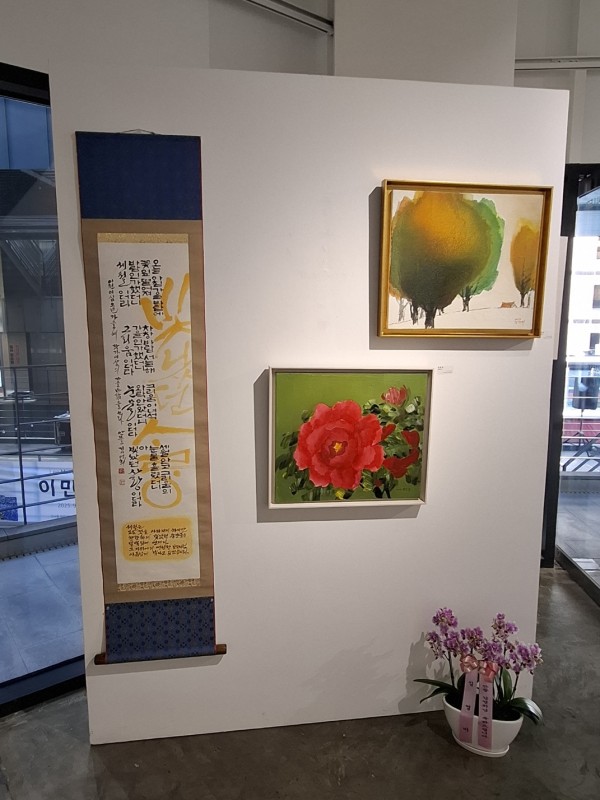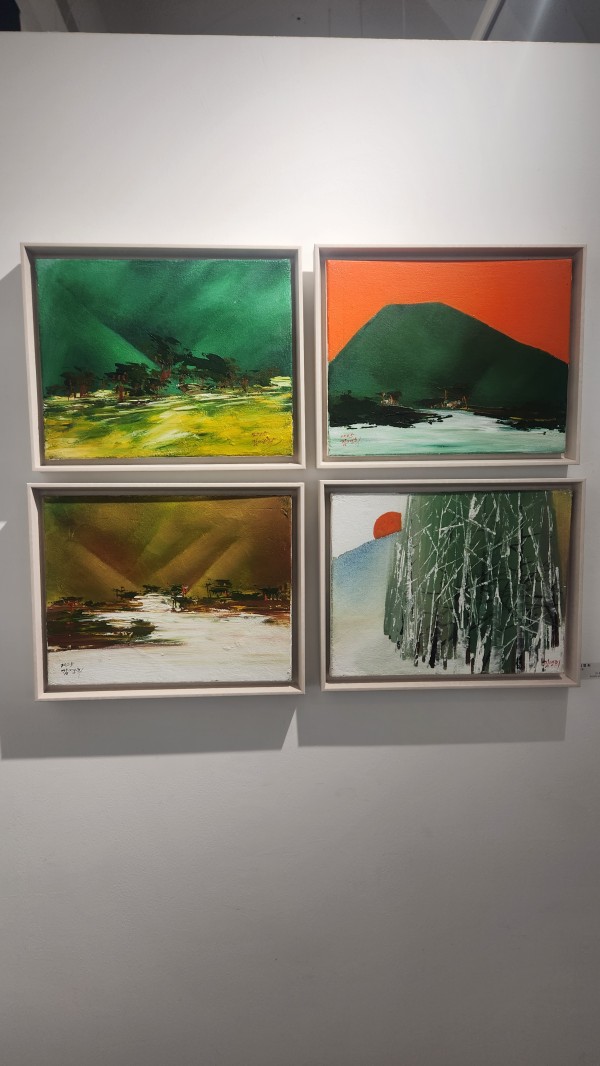
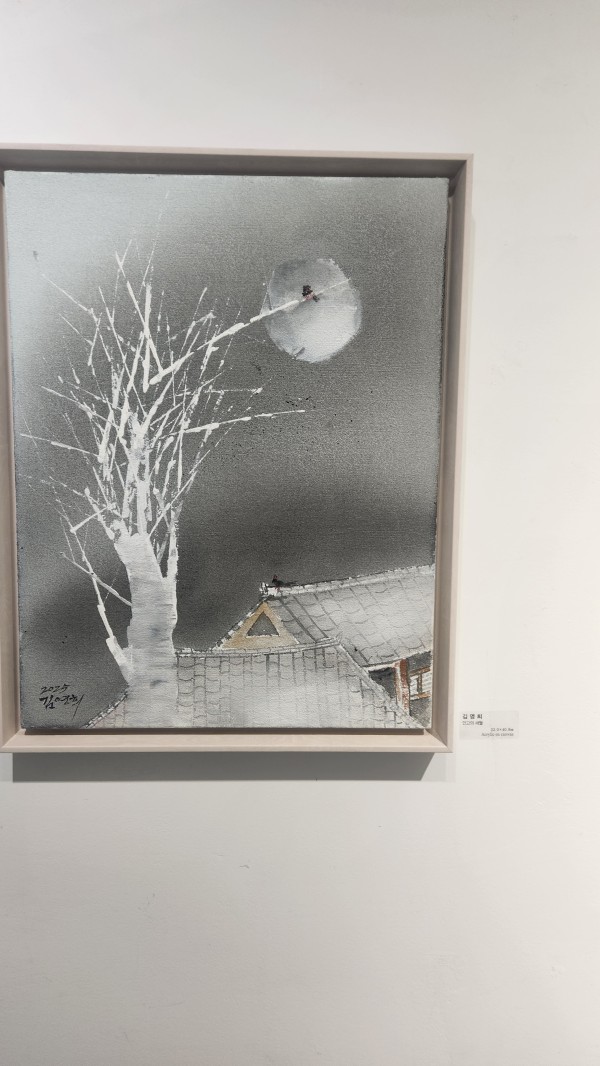
Plum blossoms in winter, magnolias in spring, lotuses in summer, and chrysanthemums in autumn.
The cycle of the seasons unfolds on the canvas of veteran literati painter Kim Younghee, whose recent exhibition at Maru Art Center in Insadong presented not just flowers, but a meditation on life itself.
For Kim, each brushstroke carries the weight of metaphor. “Plum blossoms bloom only after surviving the cold of winter,” she reflects. “Life is the same. Hardship must come before true strength and beauty.” Over decades, she has returned to the motif of the plum tree, its resilient curves echoing solitude, endurance, and the eventual flowering of hope.
Kim’s artistic journey began not in galleries, but in classrooms. As a young schoolteacher, she picked up the brush to teach her students calligraphy—and in doing so, discovered her own lifelong path. “I had to practice daily in order to guide them. Before long, it became my own discipline, and eventually my life.”
Though deeply rooted in traditional literati painting and calligraphy, Kim did not remain bound by convention. “Tradition is important, but it should not remain static,” she says. While retaining the subtle absorbency of ink on traditional rice paper, she pushed into new territory: applying ink and acrylics on canvas, experimenting with color contrasts, marbling, and layered textures. “Rice paper has its own beauty in the way ink seeps in,” she explains, “but canvas allows me to build color and texture in layers. The dialogue between tradition and modernity—that’s the core of my work.”
As a literati painter, Kim insists that calligraphy remains inseparable from her art. “Without writing, the image feels incomplete. Poetry, painting, and brushwork must come together.” Long before the popular rise of modern calligraphy, her brushstrokes already embodied fluidity and emotion, blurring the line between text and image.
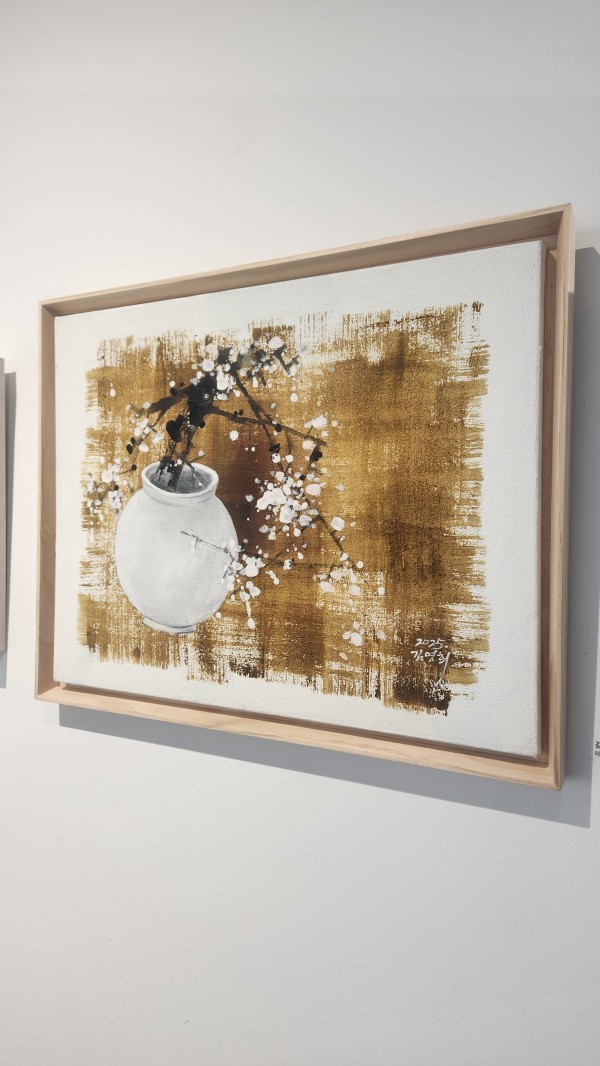
In recent years, her work has taken on an even more personal tone. After losing her spouse, she began painting the solitary figure of a wanderer, often accompanied by inscriptions like “longing” and “the passage of time.” These images are not simply visual motifs—they are fragments of her own story, inscribed in ink.
Kim’s art continues to resonate widely. Long cherished by older collectors, her bold contrasts and innovative compositions have increasingly drawn younger audiences as well. “Younger viewers tell me they find freshness in the colors and in the dialogue between tradition and modern sensibilities,” she notes.
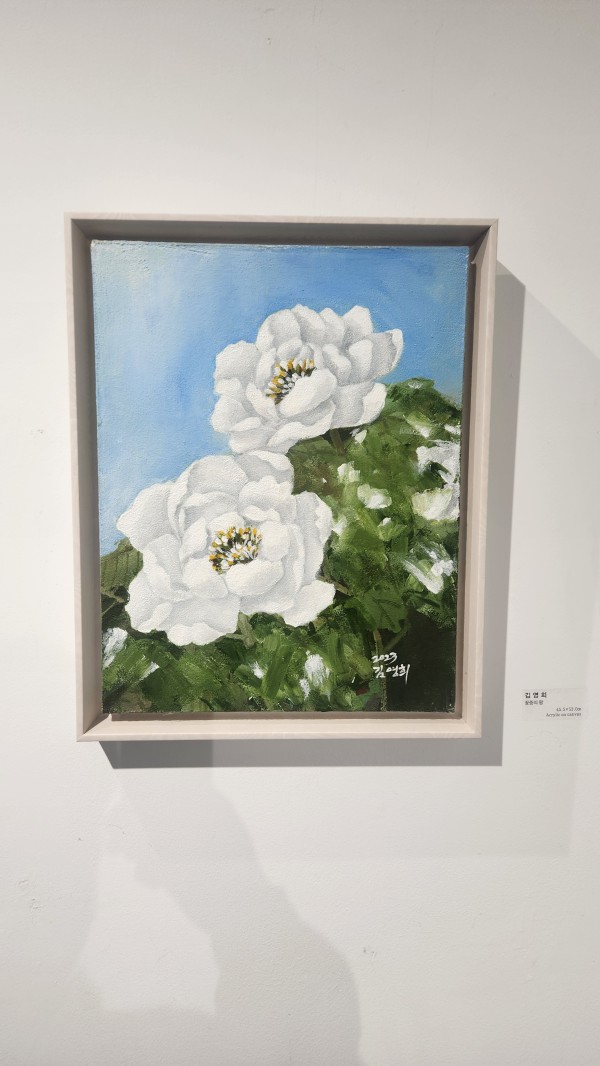
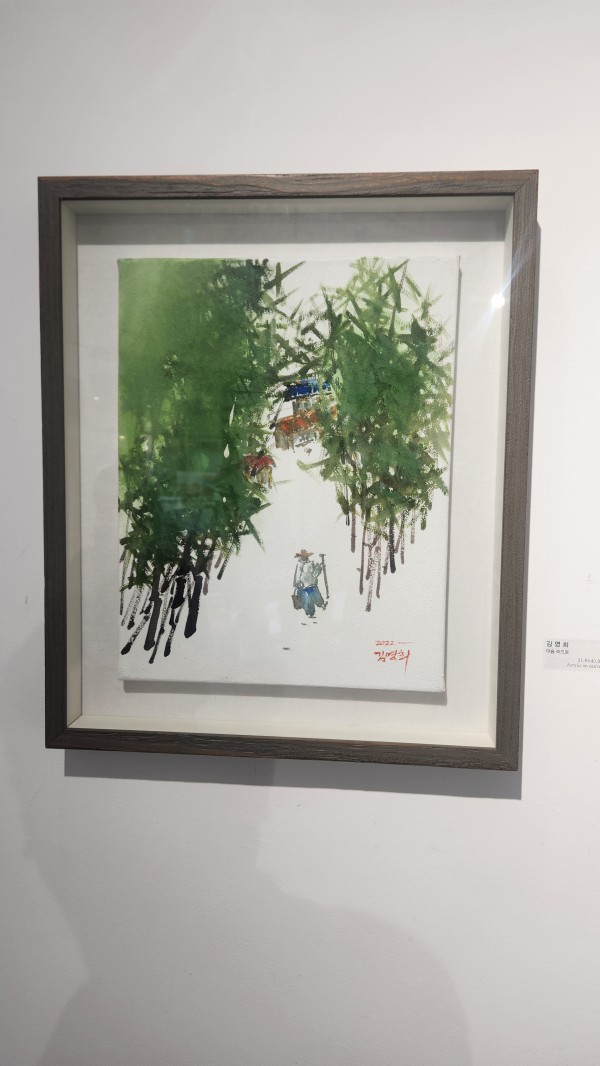
Whether it is the endurance of the plum blossom, the uprightness of bamboo, the elegance of lotus, or the fleeting splendor of the peony, Kim’s subjects always carry layered meanings. The wanderer she paints, too, is never merely a figure—it is herself, and by extension, all of us. “Life is a long journey,” she says. “Through painting, I try to express the joys and sorrows I have encountered along the way.”
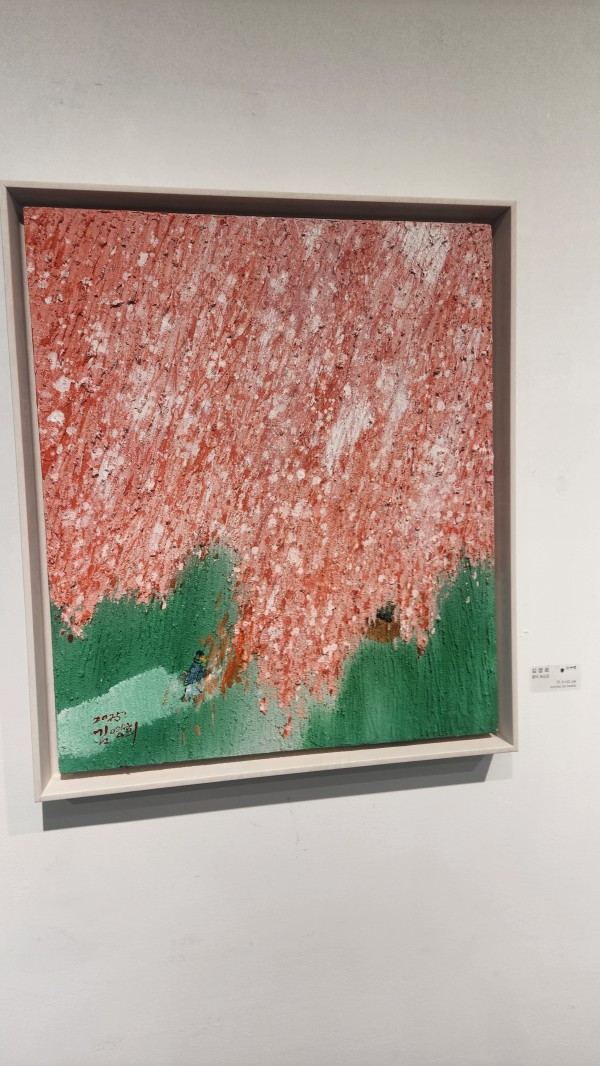
In every season, in every brushstroke, Kim Younghee’s art is both deeply personal and profoundly universal. Her canvases ask a quiet but urgent question of their viewers:
“Which season of life are you in now?”
